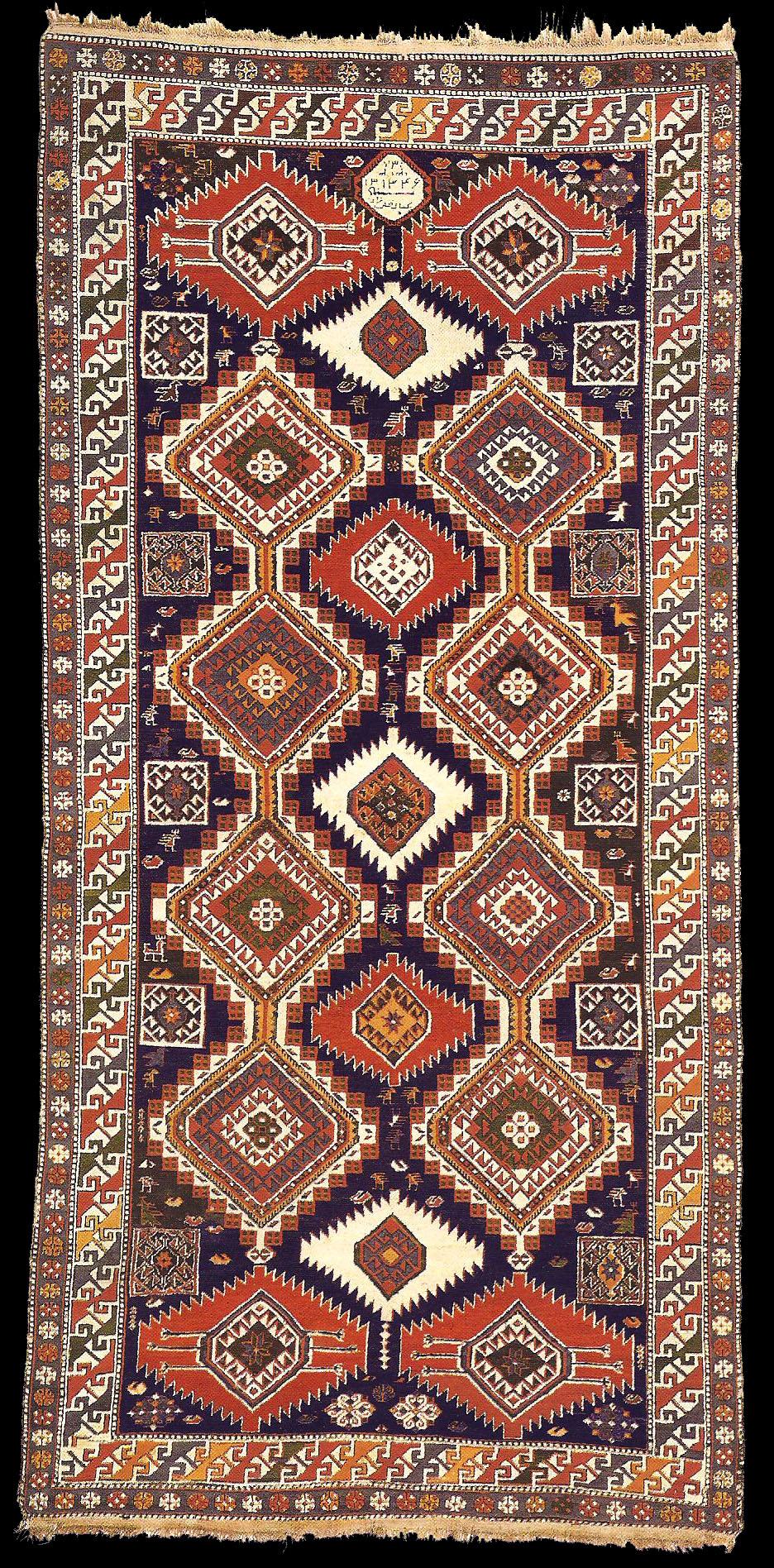|
Antique Shirvan
rug, Northern Shirvan Region,
possibly Arjiman / Archiman village, late 19th century, Azerbaijan. 1895
dating is more plausible to me here.
Plate no: 80 Arjiman
Shemakha district, Shirvan
337 X 167 cm
Dated: 1313 = 1895 or 1346 =1927
The midnight-blue central field contains two vertical rows of four stepped
lozenges, each with flame-projections at the top and bottom. These are
extremely geometrical compared to the two previous rugs. L. Keriimov
mentions that this layout is called gosha göl (double gols) in contrast to
the two previous, which are called tek göl (single goel), referring
apparently to the vertical rows.
The main border is, as in the previous rug, hörük (braid). It is
supplemented only on the outside by a minor border of rosettes.
Warps: Wool, Z 3 S, beige-brown, ivory and dark brown, 2 X ivory +1X brown,
1X ivory +2 X dbrown, 3 X ivory.
Wefts: Cotton, Z 3-4, white, 2 wefts; 1stsomewhat tight, 2nd waved.
Pile: Wool, Z2, Pile Height: 5 mm.
Knots: Symmetrical 2, / 45°, H 32, V 30 = c.960Kn/dm2.
Handle: Meaty, not thick, extremely light
Upper End: c. 1 cm white cotton simple tapestry weave.
Selvedge: Thin, round, white cotton shirazi.
Colours: 10; dark brownish-red, yellow, brownish-orange, beige-orange, dark
reddish-brown, blackish-brown (oxidised), midnight-blue, blue, green, ivory.
Condition: Strong oxidation of the blackish-brown and weak red and orange,
sides partly damaged, otherwise good with a thick pile.
Remarks: An inscription in an octagonal cartouche contains the year ("sene,
il") and a somewhat odd mixture of numbers open to the two interpretations
described above. Further more, the name of the owner or patron, Obad Kolizad,
can be seen, and "Allah" (God) is inscribed twice.
Literature: L Kerimov III; colour ill. 11; U. Schumann, loc. tit., p. 197,
ill. 66.
from
Siyawouch Azadi "Azerbaijani Caucasian rugs"
 |

